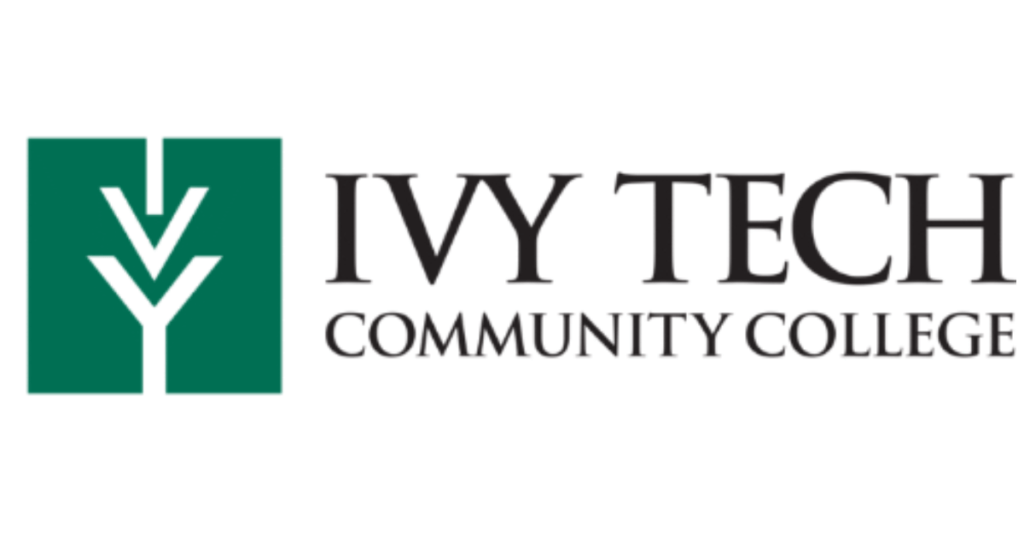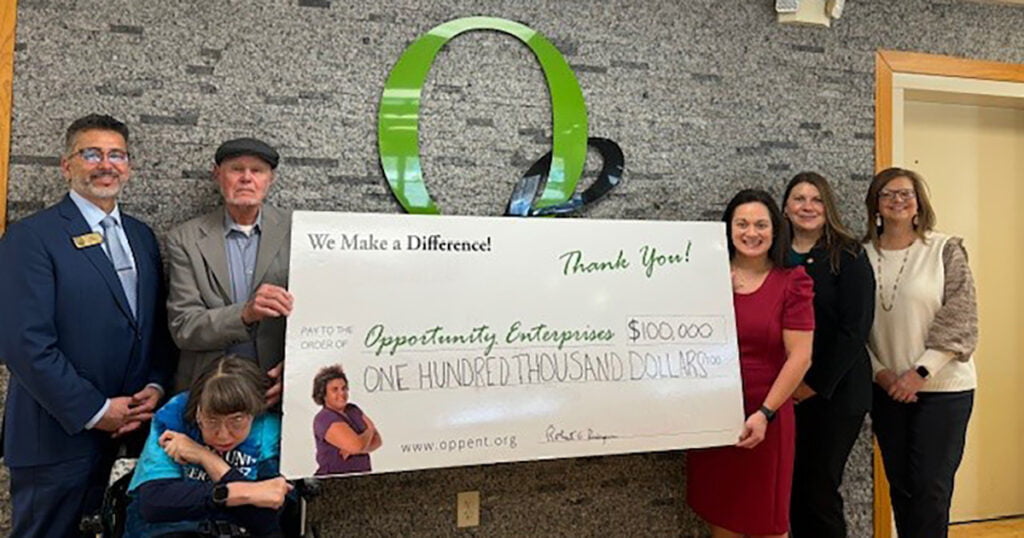Enrollments and tuition are up at region's colleges.
by Kathy McKimmie
Over the past decade, tuition at Indiana's taxpayer-supported colleges and universities increased nearly 100 percent, while per capita income rose less than 1 percent, according to the Indiana Commission for Higher Education.
Two weeks after the Indiana General Assembly finished its work at the end of April, the commission laid down its plan for maximum tuition increases for the state's seven public colleges and universities. Although only advisory, it cautioned that tuition and mandatory fees should increase no more than 2.5 to 3.5 percent per year for the next two years or low- and middle-income families may be priced out of higher education.
The highest recommended level was reserved for the main campuses of Indiana University and Purdue University; their regional campuses should be 2.5 percent or less, according to the commission. Indiana State and Vincennes should stick to no more than 2.5 percent too, while Ivy Tech, Ball State and the University of Southern Indiana should be no more than 3 percent.
One by one over the weeks that followed, the state's schools held their mandatory hearings and all but one, Ivy Tech, surpassed the recommendations, with IU approving the heftiest increases. Purdue surpassed the recommendation only for its West Lafayette campus, which the commission recognized as a special circumstance for a wellness fee. Few people attended the various hearings and only a handful spoke against the increases. If there is outrage, it's not being voiced.
Private colleges and universities, not tied to the state legislature's two-year budgeting process, determine their increases on an annual basis without a required public hearing.
Northwest Indiana's public colleges and universities
Costs at IU Northwest, Gary, with the combination of a 2.5 percent tuition increase and a mandatory fee for building maintenance, will go up 3.5 percent this fall and another 3.4 percent in 2012-13.
“At IU Northwest we have what could be delicately referred to as an aging campus,” says Chancellor William Lowe, adding that the state committed no resources for repair and rehabilitation of the public university campuses over the next biennium. IU Northwest opened in 1959 and is second only to Bloomington in the age of its buildings, which need maintenance.
The tuition and fee increases at IU Northwest and at other IU regional campuses are established by the IU Board of Trustees on the basis of recommendations provided by IU President Michael A. McRobbie and the university's senior leadership, says Lowe. In a prepared statement, McRobbie said the “temporary” repair and rehabilitation fees will stay in effect until the state “fully funds” the building repair program. For the last decade it's been funded at only 20 percent, so the add-on is likely to be around for the foreseeable future.
Despite the tuition and fee increases, Lowe says Indiana University tuition remains affordable, and IU Northwest expects a modest enrollment gain for the 2011-12 academic year, on the heels of a record enrollment of 5,969 students in 2010-11. Nearly two-thirds of IU Northwest students receive some form of financial assistance with an average loan debt for a four-year undergraduate degree of $26,400.
Purdue University has two regional campuses in Northwest Indiana: Purdue Calumet in Hammond with about 10,000 students and Purdue North Central in Westville with more than 4,600. Tuition increases at both campuses will be at the recommended 2.5 percent for each of the next two years.
“We already have a very reasonable tuition for our students,” says James Dworkin, chancellor of Purdue North Central. “I call it a bargain. We have small classes and they get to meet with their professors.” He adds that the increase “is in contrast to the previous two years' increase of 5 percent each year.”
Howard Cohen, the recently retired chancellor of Purdue Calumet (Thomas Keon took over July 1) says it's important to remember that with public universities the student is only paying 45 percent of the cost; the state subsidizes 45 percent and the rest is from gifts, grants and contracts. “Otherwise, it sounds like students are having an astronomical increase.”
Purdue North Central's enrollment grew by 5 percent in each of the last two years, because when the economy is down, enrollment tends to go up, says Dworkin.
Growth is steady and managed at about 1 to 2 percent a year at Purdue Calumet, says Cohen, with tougher admission requirements resulting in 200 students being denied admittance and referred to Ivy Tech last year.
“Our campus does not charge by the semester, but by the credit hour,” says Cohen, with 12 hours considered a minimum full-time load. Sixty percent of students are full-time and the number graduating in four years was up to 49 percent in 2010-2011, from 42 percent four years ago. About half of its students get scholarships and grants, and about the same number have loans averaging $27,000 upon graduation.
Dworkin points out there is no competition — only cooperation — among schools in the region, and the presidents and chancellors meet monthly. Each institution plays to its strengths and location and offers different programs to meet student demands. One key exception is nursing.
“Nursing is so much in demand we can all offer it,” he says. And Ivy Tech is fulfilling its mission as a feeder system for the other schools. “After one or two years at Ivy Tech, students can transfer seamlessly to Purdue North Central.”
Chancellor Guadalupe Valtierra at Ivy Tech Northwest echoes Dworkin's comment on cooperation. “Students who begin at Ivy Tech and transfer are better-performing students at the baccalaureate level.”

Ivy Tech Community College is the fastest-growing and now the largest public higher education system in Indiana. All locations in its 14 regions increased tuition by 3 percent for the next two years, but froze tuition rates for Hoosier veterans, members of the Indiana National Guard, and state employees. “We have the lowest tuition in the state,” he says, and the convenience of local campuses.
Ivy Tech Northwest is the second-largest school in Northwest Indiana, next to Purdue Calumet, with just under 10,000 students at four locations: Gary and Valparaiso (the two largest), East Chicago and Michigan City. “Our curriculum responds to community needs and we partner with businesses,” Valtierra says. Sixty percent of students are employed full-time and up to 95 percent stay in the community when they complete their studies. When the economy improves, students will be retooled and ready, says Valtierra.
Private universities in Northwest Indiana
“We are in an uncomfortable and somewhat unique situation,” says Dennis Rittenmeyer, the recently retired president of Calumet College of St. Joseph in Whiting (Dan Lowery took over July 1). Amid great discussion among board members, it passed a 4 percent increase for the fall, says Rittenmeyer.

“We have a modest endowment, so we are dependent upon tuition.” Still, with a full-time annual tuition of $14,200, it is the lowest among private bachelor-degree granting institutions in Indiana.
Calumet College opened in 1951 to serve the working class in Lake County, and now also serves a large group of students from Northeast Illinois. It operates from one building and has no housing.
“For a time we had — and may still have — the poorest and the oldest students,” Rittenmeyer says. Although there was some good news in the General Assembly's budget, it was not enough, he says.
“The SSACI (State Student Assistance Commission of Indiana) awards actually went up modestly. But there has been such an increase in the number of applicants, due in large part to Ivy Tech, that the pie is bigger but the slices are smaller.”
Calumet College was ranked the most diverse college in the U.S.; since changing to university status (although it has not changed its name) it's now No. 2. Rittenmeyer expects about 1,300 to be enrolled in the fall, mostly part-time, and says its public safety and law enforcement programs are the largest in the Midwest. “Unfortunately for all of us, it's a growth industry.”
Unlike most of the college and university campuses in Northwest Indiana, where many students work nearby and attend part-time, Valparaiso University's president, Mark Heckler, says the school is better compared with the main campuses of IU or Purdue, or with a private university such as Butler in Indianapolis.

It's a growing residential campus with just under 3,000 students, most full-time, with a law school and a Division I athletic program, attracting 85 percent of its students from the Great Lakes region; the rest come from 40 states and 50 countries.
Valparaiso's tuition will increase 4.9 percent in the fall, says Heckler, to nearly $31,000. He loves the chance to talk to parents about the cost of Valparaiso vs. public schools. You might think they're cheaper, he says, but at the end of the day, there's not that much difference.
About 94 percent of VU students receive financial aid, and two-thirds of students have student loans that average $33,000 on graduation. “We graduate more of our students in four years, and within six months 94 percent are in jobs or in graduate school.”
Although Valparaiso is educating students in fields that exist today, such as nursing and engineering, training for specific jobs is not the main focus, Heckler says, since graduates will average 19 job changes. “Fifty percent of those jobs don't yet exist. We give them content, but teach them communication skills, critical thinking and give them experiential learning needed to be globally competent and flexible.”
At Notre Dame, undergraduate tuition will rise in the fall to $41,417, a 3.8 percent increase, the same increase as last year. It had an undergraduate enrollment of 8,442 out of a total of nearly 12,000 students in 2010-2011, and about the same level is expected next year. Students come from every state and 100 countries.
Graduating on-time has a long tradition at Notre Dame, says Don Bishop, associate vice president for undergraduate enrollment, and its rate is 95 percent for its four-year undergraduate programs and five-year architecture program. That ranks the school in the top handful among national research universities.
Institutional scholarships are looked upon as an investment in Notre Dame students, Bishop says. “We're providing half our students with over $100,000 over their four years in scholarships from Notre Dame.”
Students may also receive other outside financial aid such as Pell grants, state grants and ROTC, and about half of undergraduates work on campus.
For those undergraduate students who incur debt, the average at Notre Dame is $19,000, less than many students at state-supported schools. Although few schools have as generous a financial aid program as Notre Dame, it's a good lesson for students and parents: take a look at all the variables in weighing public and private colleges and universities.




